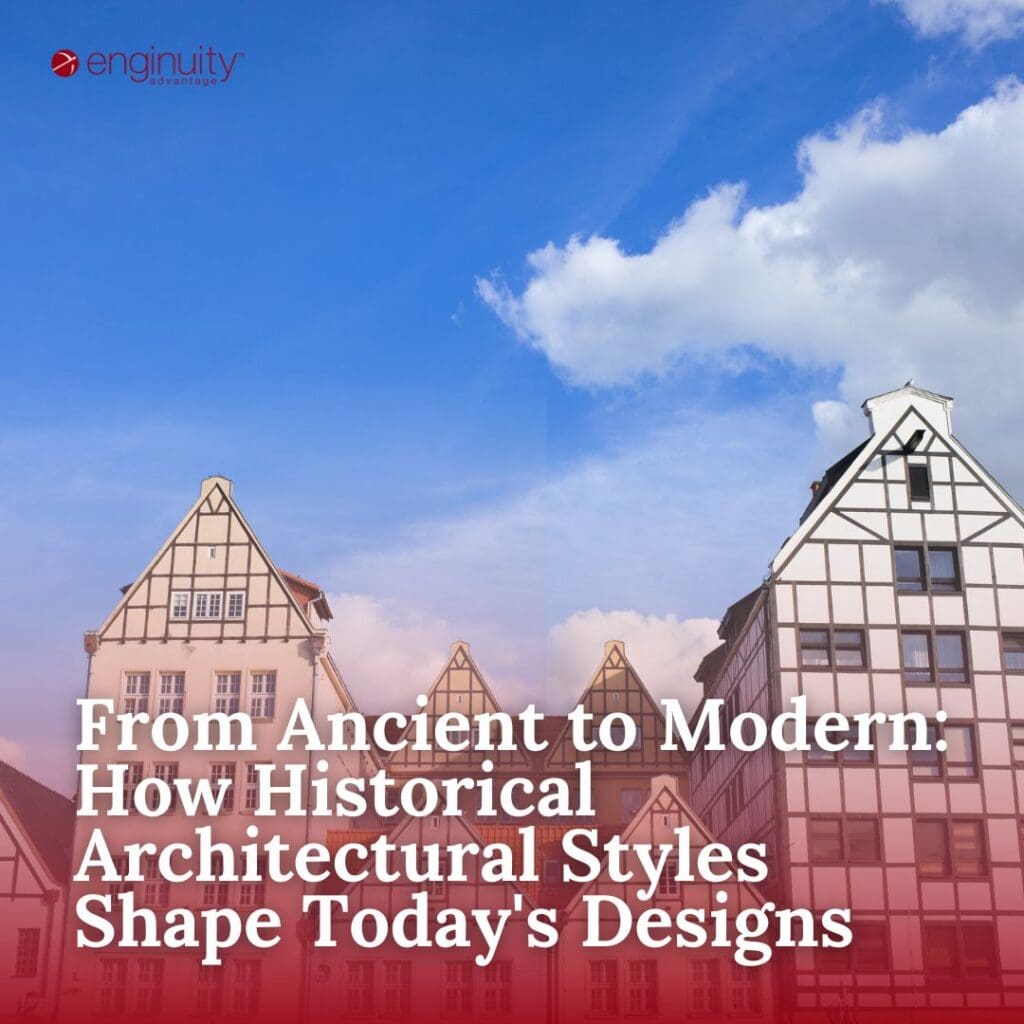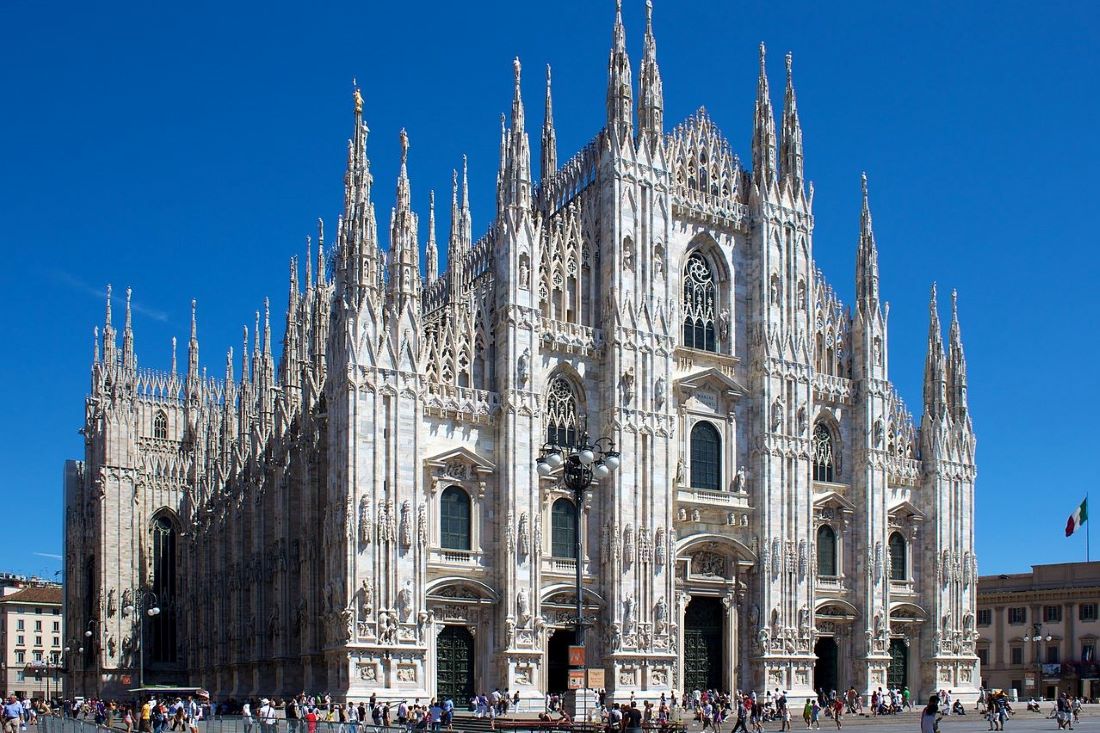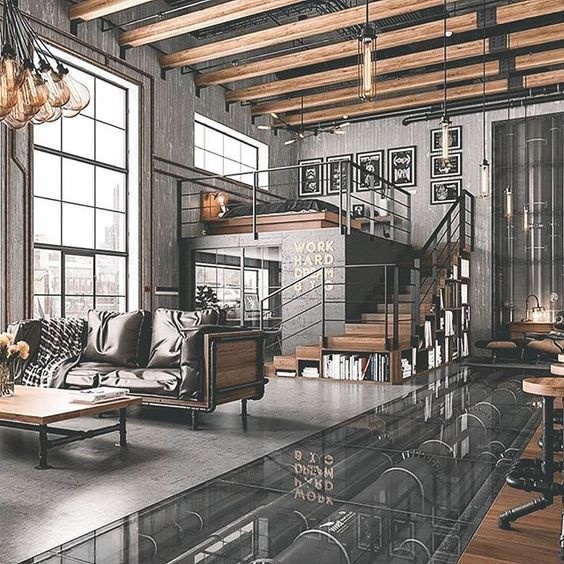How Historical Architectural Styles Shape Today’s Designs

As you walk down the street, you may not realize it, but you’re witnessing a timeline of architectural evolution. The buildings that line our cities are more than structures; they’re storytelling devices, capturing epochs of design philosophy. Modern architecture is a tapestry woven with threads from its ancient predecessors, showcasing a rich heritage of styles that continue to influence the skyline of today. Let’s explore the lasting marks historical architecture has left on contemporary design, offering a perspective that resonates with any lover of architecture.

Source: Art in Context
The Classical Foundations
The classical architecture of ancient Greece and Rome, with its iconic columns and symmetry, remains one of the most enduring styles. Its principles are deeply embedded in the DNA of modern design. The U.S. Capitol building and countless courthouses across America echo these ancient motifs. Classical design elements are present in over 30% of public buildings. Recognizing the classical order’s influence on government and institutional buildings is crucial.
The Doric order is the earliest of the three orders of classical architecture, and it also marks a significant turning point in the development of Mediterranean architecture because it marks the transition of monumental construction from temporary materials, such as wood, to permanent ones, namely stone.
During the era of the Roman Republic and subsequently, the Empire, Roman architecture experienced a significant period of prosperity. Many of the surviving structures from that time showcase robust and advanced engineering, a testament to innovative practices and materials such as Roman concrete. The incorporation of architectural elements like arches and domes also marked a step forward in building techniques.

Source: University of Notre Dame
The Gothic Peak
The Gothic style, renowned for its pointed arches and elaborate ornamentation, may seem distant from today’s sleek lines. However, its emphasis on verticality and light can be seen in the spires of modern skyscrapers and the extensive use of glass. The Council on Tall Buildings and Urban Habitat notes that contemporary designs borrow the Gothic sense of reaching skyward in today’s skyscrapers. Understanding this can be a stepping stone for those who specialize in high-rise buildings and urban landscapes.
:max_bytes(150000):strip_icc():format(webp)/GettyImages-1210659789-e0c4b070626140a4af0f6016ff24b0ba.jpg)
St Peter’s Basilica – joe daniel price / Getty Images
The Renaissance Rebirth
The Renaissance brought a rebirth of classical ideas, emphasizing proportion and perspective. This has translated into the modern era’s focus on balance and harmony in design. Apple’s retail stores, inspired by the open, airy concept of Renaissance architecture, reflect this ideology. For those looking to enter the commercial sector, appreciating how the Renaissance influences consumer spaces, is key.
Key Characteristics of Renaissance Architecture
- Symmetry and Proportion: Renaissance architecture emphasizes classical beauty ideals through proportional and symmetrical designs often based on square geometrical shapes.
- Ashlar Masonry: Buildings commonly feature ashlar masonry, where stones are uniformly cut and laid horizontally in a precise, mortar-minimized manner.
- Classical Elements: The use of classical architectural elements like domes, columns, pilasters, lintels, arches, and pediments is prevalent, arranged orderly and repetitively.
- Air and Light: There is a distinct focus on creating spaces that allow ample air and light, reflecting the enlightened thinking of the Renaissance era.
 The Industrial Revolution’s Functionality
The Industrial Revolution’s Functionality
The Industrial Revolution introduced materials like iron and steel, revolutionizing building techniques. The minimalist, function-over-form approach of modern industrial design finds its roots here. Loft apartments with exposed beams and ductwork pay homage to this era. Understanding how industrial elements are used in residential design is a marketable skill.
4 Characteristics of Industrial Architecture
1. Wide-open spaces: Industrial buildings tend to have open floor plans and high ceilings.
2. Minimalist aesthetic: Industrial architecture tends to follow the philosophy of modern architecture by prioritizing functionality over ornamental flourishes.
3. Exposed materials and utilities: Exposed brick walls, concrete floors, and steel beams are commonly found inside industrial residential spaces. You’ll likely find exposed ductwork, wiring, and plumbing as well.
4. Natural light: Industrial architecture makes efficient use of natural light via large, metal-grid windows or floor-to-ceiling windows.

Architecture.org
Modernism and Beyond
Modernism stripped away ornamentation in favor of function and simplicity, leading to the sleek, glass-and-steel structures that dominate our cities. The International Style, a branch of modernism, has been especially influential, characterized by its lack of decoration and uniform appearance. Many corporate buildings constructed in the last two decades draw from the International Style. The most common characteristics of International Style buildings are rectilinear forms; light, taut plane surfaces that have been completely stripped of applied ornamentation and decoration; open interior spaces; and a visually weightless quality engendered by the use of cantilever construction. Glass and steel, in combination with usually less visible reinforced concrete, are the characteristic materials of construction. If you have an eye for modernism you can find ample opportunity in corporate architectural design.

tomorrow.city
Sustainability: The New Heritage
Today, sustainability is at the forefront of design, These types of strategies reached 35% of buildings in 2018. The ancient techniques of using local materials and passive solar design are re-emerging in contemporary practices. With climate change increasingly at the forefront of global conversations, the architectural world isn’t exempt from the pressure to go green. And guess what? Adaptive reuse is arguably one of the most eco-friendly practices in the field. By repurposing existing structures, we significantly reduce the carbon footprint linked to demolishing old edifices and erecting new ones from scratch. Expertise in sustainable design isn’t just desirable—it’s increasingly mandatory.
The Past Informing the Future
The historical architectural styles are not just relics; they are dynamic, living blueprints that continue to mold today’s designs. In the realm of architectural design, the days of solely relying on blueprints and 2D sketches are becoming a thing of the past. Enter Virtual Reality (VR) – a game-changing technology that’s revolutionizing how architects envision, design, and present their creations. A deep understanding of these styles is far from academic—it’s a pivotal framework for navigating and influencing the evolving architectural narrative. As you prepare to enter or advance in the field, let this rich historical awareness guide you and inspire innovation in your designs.
Are you ready to channel the architectural mastery of the past into creating the landmarks of tomorrow? Explore our open positions for architects and find where you fit into this grand design tradition. Or if you’re looking for guidance to carve out your unique space in the architectural world, let us assist you in finding a job that lets you leave your mark on the skyline. The conversation between past and future is ongoing, and your voice is the next to join this legacy.
Embrace the opportunity to be part of history in the making. Check out our career opportunities or reach out for personalized job-finding assistance today.
Unlock Dream Careers & Elite Talent: Just One Click Away!



 The Industrial Revolution’s Functionality
The Industrial Revolution’s Functionality